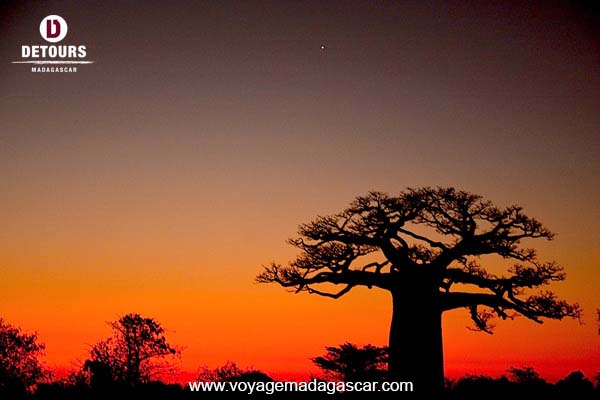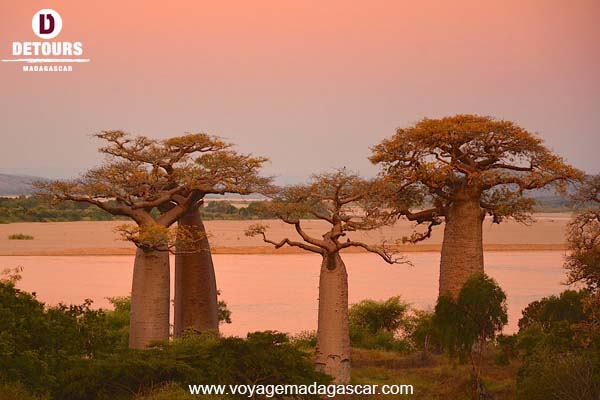Madagascar
The Baobabs of Madagascar: Iconic and mythical trees
The baobab is an iconic tree of Madagascar, defining the landscape of the southern and western parts of the island. Represented on the 50 ariary coin, it leaves a lasting imprint on the past and present of the Malagasy people. These majestic trees are awe-inspiring in person, with their massive trunks, smooth bark, and towering height. In fact, several tourist circuits are dedicated to exploring baobabs. Interestingly, 6 out of the 8 baobab species in the world are endemic to Madagascar!
The Queen of the forest
Baobab and Myths: Several myths surround this enormous tree, which can grow up to 30 meters tall and has a very unique appearance. The most famous tale is that the baobab was planted upside down by God. In Madagascar, each village tells its own version of the story. For instance, in the southwest of the island, in the small village of Andombiry, the largest tree of a vast baobab forest is revered by the locals.
Baobab and daily life: The baobab is used in everyday life: its pulp (rich in vitamin C and calcium) and leaves are eaten, while the bark, flowers, seeds, and roots are used as medicine. The wood is also used in construction, especially for making tiles and walls. In Ampotaka, on the Mahafaly Plateau in the south of the island, the baobab serves as a water reservoir during the long, harsh dry season. The trunks are hollowed out and filled with water during the short rainy season.
Baobab and Eternity: In Malagasy, the baobab is called reniala, meaning "queen of the forest". The tree is truly imposing, with adult specimens reaching about 20 meters in height and a trunk circumference of around 20 meters. The diameter of the trunk can reach 10 meters. The oldest known baobab in Madagascar is located in the Tsimanapetsotse National Park, south of Tuléar, and is known as “Grandmother.” This tree, a member of the Adansonia rubrotispa species, is estimated to be 1,600 years old.


Baobab landscapes
Baobabs and Land: When people mention baobabs, many immediately think of the famous “Avenue of the Baobabs.” This small dirt road is lined with around a dozen baobabs that are more than 30 meters tall and over 800 years old. The trees are perfectly aligned and provide a breathtaking scene, especially during sunrise or sunset. The site is located within a protected area, 19 kilometers from Morondava in western Madagascar.
Baobabs and River: One of the best ways to admire the baobabs is by following the Mangoky River, which unveils an unmatched landscape. It’s a paradise for photography enthusiasts and nature lovers. A descent of 170 kilometers along the river typically takes at least a week, allowing travelers to fully appreciate the wonders it offers: baobabs lining the riverbanks, nestled in ridges, or filling canyon bottoms. This western river, accessible between the towns of Beroroha and Ambiky, invites adventure.
Baobabs and Sea: The baobab is never far from the ocean in the western part of Madagascar and is a distinctive feature of the inland landscape. Sometimes, the trees grow in brackish water ponds. This is noticeable when traveling by 4x4 vehicle to the beach resorts of Ifaty or Anakao. However, the most famous baobab by the sea is in Majunga, where Bouye Be has become the city’s symbol.
For an unforgettable experience, it's recommended to attend the Baobab Festival in Morondava in July. For a full immersion into the world of baobabs in Madagascar, check out the trailer for the movie Baobabs: Between Earth and Sea by Cyrille Cornu. You can find more details on the official Baobabs Land-Sea website, where the DVD is available for purchase.

